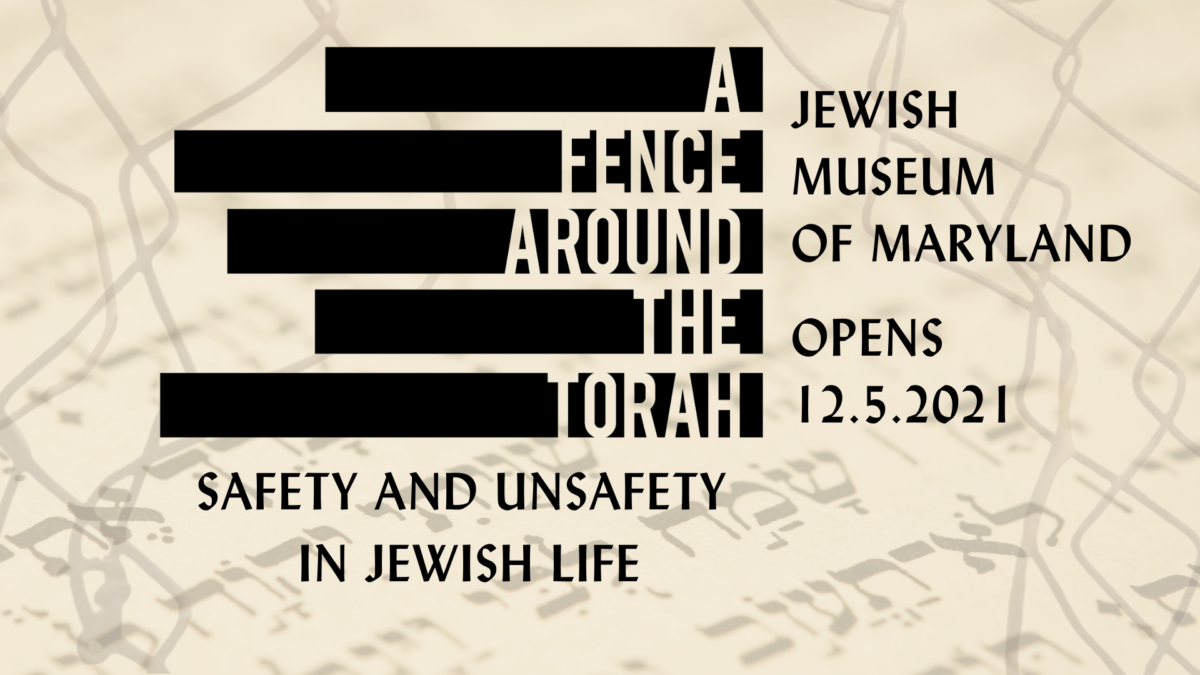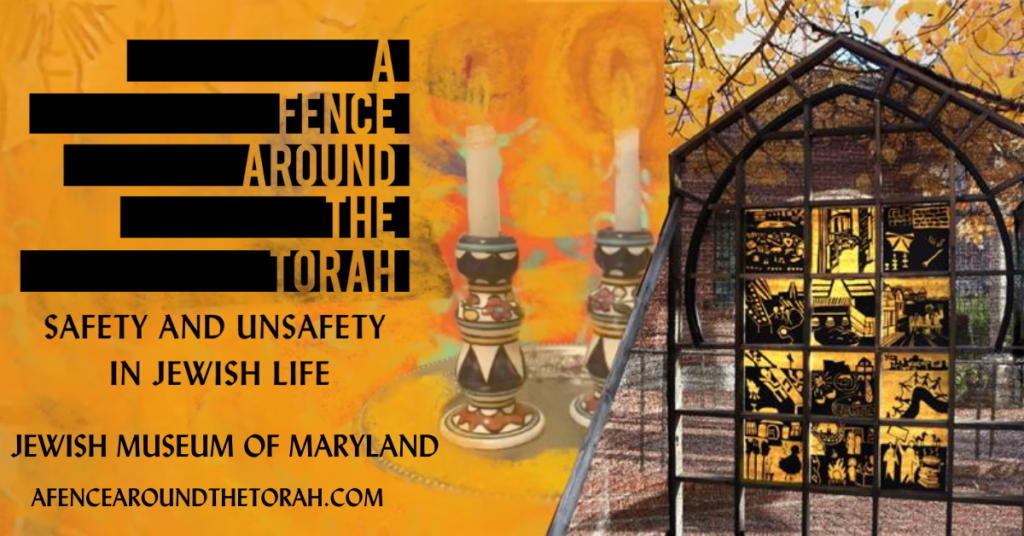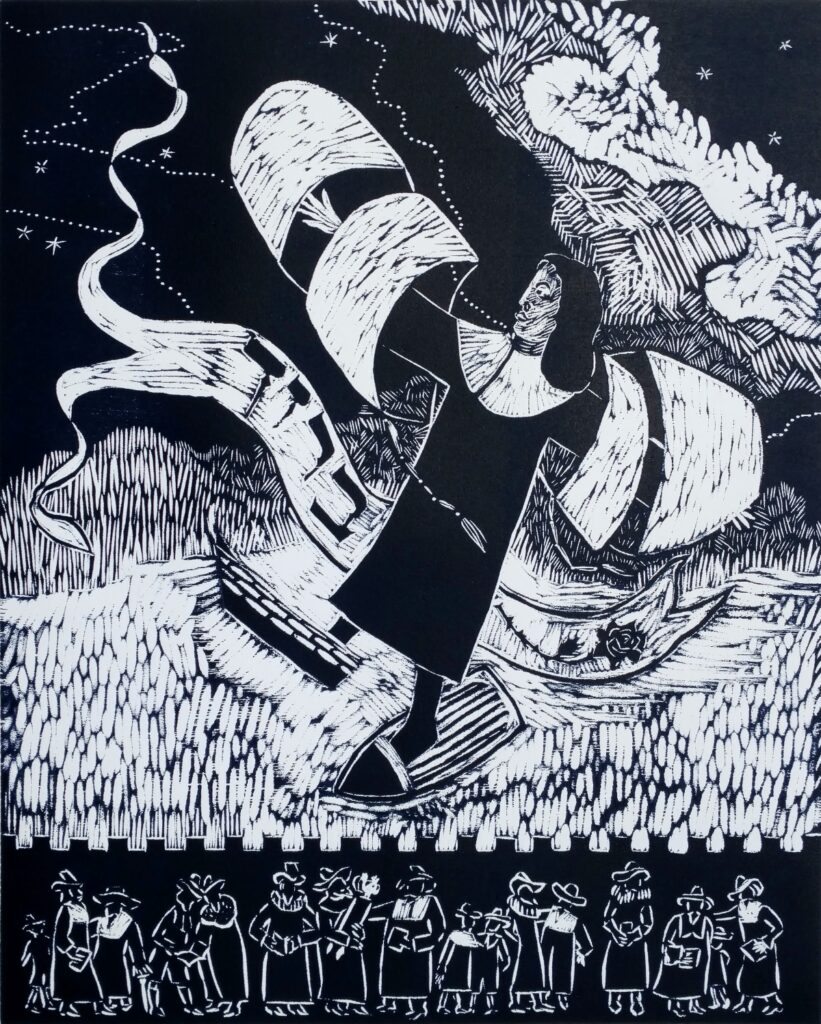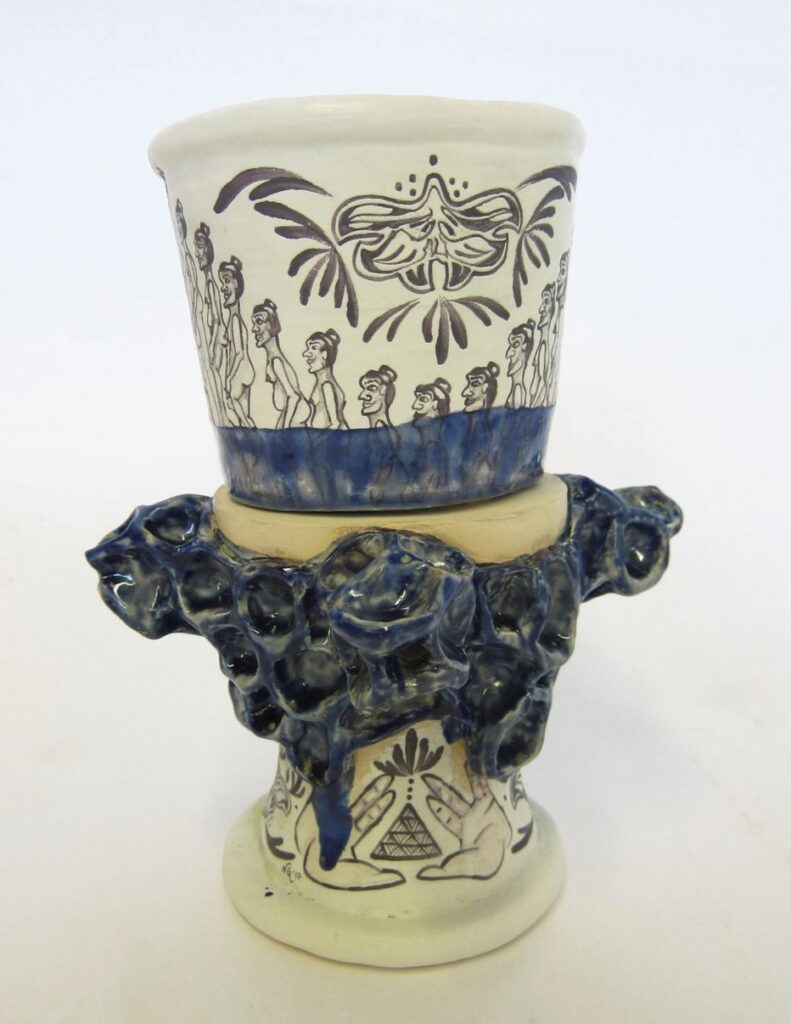A Fence Around The Torah: Safety And Unsafety In Jewish Life


NOTE: A Fence Around The Torah will be closed to the public until February 6, 2022. You can view the exhibit online here.
Over the winter the Jewish Museum of Maryland is showing a new exhibit called A Fence Around the Torah: Safety and Unsafety in Jewish Life. Through a combination of video, sculpture, painting, textile, poetry and more, this multi-media installation explores the concepts of safety and unsafety, and how physical and emotional danger has been experienced by marginalized community members and neighbors within and in proximity to Jewish institutional spaces.
Works include personal reflections on queer life and Judaism, racial justice in Jewish spaces, cultural loss and reclamation, political dialogues and dissent, mythological narratives around unsafety and dreams for inclusion and solidarity coming from within Jewish institutions and the organized Jewish community.

Curatorial Statement By Jewish Museum Of Maryland Curator-In-Residence Liora Ostroff
Judaism’s commitment to enduring collective identity is enshrined in the Mishnah, the first comprehensive written collection of Jewish oral tradition and law. Pirkei Avot, “ethics of our forefathers,” instructs us to “make a fence around the Torah.” With the Torah at its center, Jewish law and practices—the fence—define the bounds of Jewish life and preserve the core values and ethics of Judaism.
But safety practices, an integral part of this fence, which Jewish communities build today to protect communal life, can also perpetuate unsafety and create barriers to participation for diverse Jewish populations and challenge relationships with our neighbors.

A Fence Around The Torah: Safety And Unsafety In Jewish Life explores manifold discussions on safety and exclusion in Jewish communities. American Jewish communities and institutions must, on one hand, respond to rising antisemitism and white supremacist violence, and on the other, acknowledge the ways that Jewish institutions have created physical and emotional danger for marginalized community members and neighbors marginalized by white supremacy and systemic oppression. The exhibit reimagines the “fence” as a conscientious fortification for Jewish life and complex Jewish identities.
The artists in this exhibit responded to a series of generative questions around safety, unsafety and exclusion to highlight the internal conflict over safety and exclusion within Jewish communities and institutions. This work includes personal reflections on queer life and Judaism, racial justice in Jewish spaces, cultural loss and reclamation, political dialogues and dissent, mythological narratives around unsafety, and dreams for inclusion and solidarity coming from within Jewish institutions and the organized Jewish community.

As part of this project, the JMM hosted a fall conversation series inviting participants to reflect on safety and exclusion within their own communities and discuss how to carry these conversations outward. Learn more here.

Leave a Reply